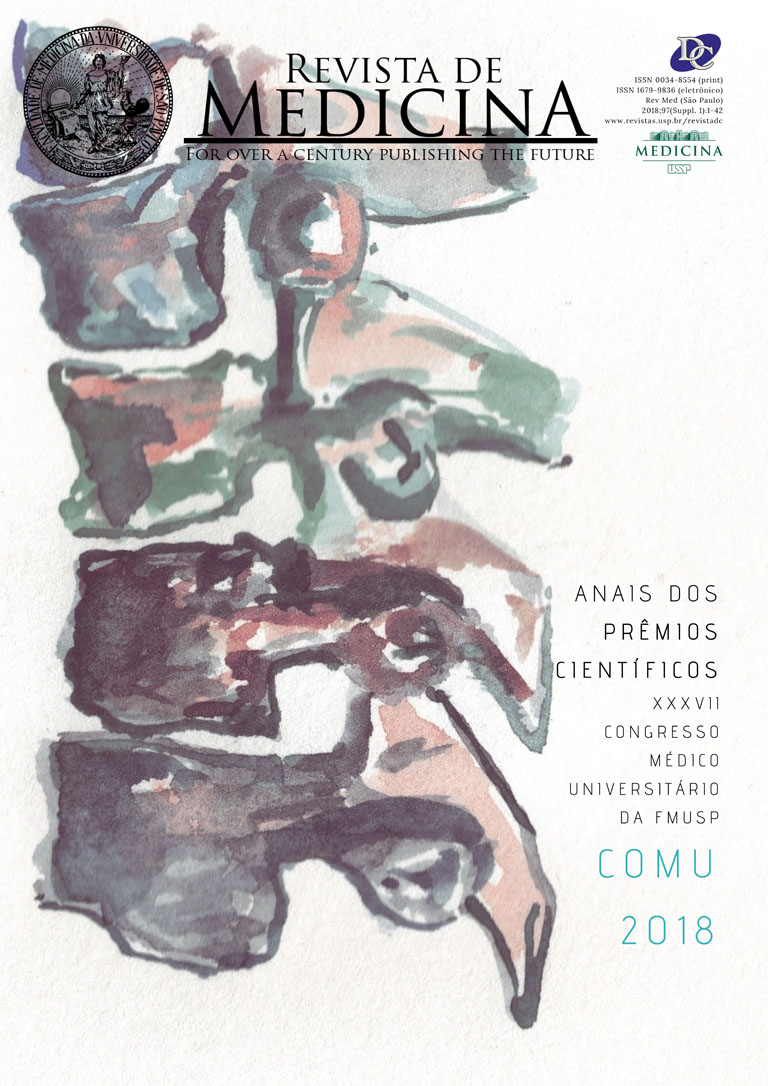HDL preserves mitochondrial complex I activity during myocardial reperfusion injury
DOI:
https://doi.org/10.11606/issn.1679-9836.v97iSuppl.1p14-14Palavras-chave:
HDL, Traumatismo por Reperfusão Miocárdica, MitocôndriasResumo
Introduction. Myocardial reperfusion injury answers for half of final infarct size following myocardial infarction, although no effective therapy has yet been discovered. Modulation of mitochondrial activity stands as an attractive target, as its impairment following reperfusion impairs ATP generation and henceforth turns cardiac recovery less prone to occur. HDL reduced final infarct size in different ischemia-reperfusion injury models for unknown mechanisms. Whether this effect involves mitochondrial activity modulation is unknown. Hypothesis. HDL post-conditioning preserves mitochondrial activity. Methods. Hearts extracted from male adult Wistar rats were subjected to 35min of regional ischemia, followed by 90min of reperfusion in a Langendorff apparatus. HDL (200ug/mL) or saline solution (PBS) was administered during the 7 first minutes of reperfusion. Infarct size was determined as percentage of total ventricular area, considering area at risk (AAR) as the delineated by Evans Blue. Cardiac samples underwent high-resolution oxygraph, and maximal oxygen consumption rate was calculated after the addition of saturating concentrations of ADP (1mM). Mitochondrial viability and complex I activity were assessed by colorimetric assays. Statistical analysis. Data are mean ± standard error. Means were compared by Student`s t test and p value < 0,05 was considered significant. Results. Treatment with HDL improved cardiac recovery, as indicated by better recovery of LVDP and dP/dT, and reduction of coronary artery resistance in comparison to control group (30,5 vs. 46,7%, 26 vs. 54,7% and 144±30 Vs. 98±14mmHg/mL, respectively; p<0.01). Treatment with HDL reduced final infarct size by 30% in comparison to control (69.2±3.7% Vs. 49.2±13%; p<0.001). The HDL group showed higher ADP-stimulated oxygen consumption rate (7.1±2.2 Vs. 33.8±6.6pmol/s.mg; p<0.05; n=6) and greater complex I activity (12.7±4.2 vs. 30.7±4.4mOD/min; p<0.05; n=3 per group) compared to control, though mitochondrial content was comparable (1.1±0.8 vs. 1.1±0.8AU; n=3; ns). Conclusions. Ischemic postconditioning with HDL reduces infarct size and preserves complex I activity, improving myocardial recovery following reperfusion injury.
Downloads
Downloads
Publicado
Edição
Seção
Licença
Copyright (c) 2018 Revista de Medicina (São Paulo)

Este trabalho está licenciado sob uma licença Creative Commons Attribution-ShareAlike 4.0 International License.




